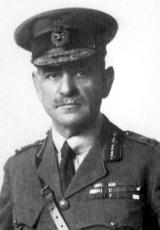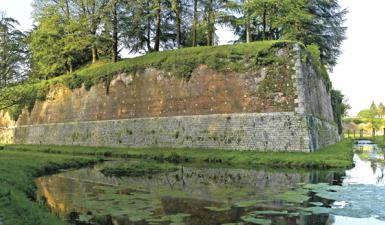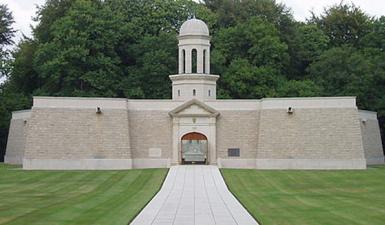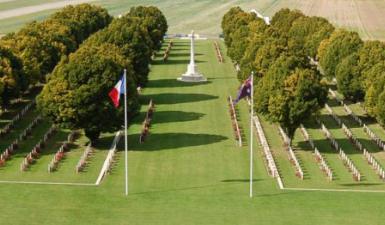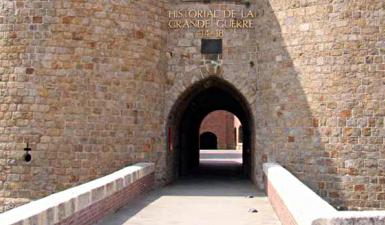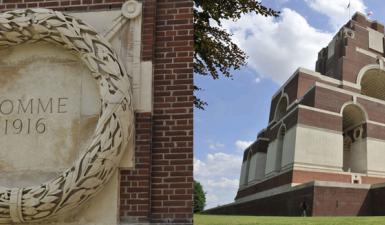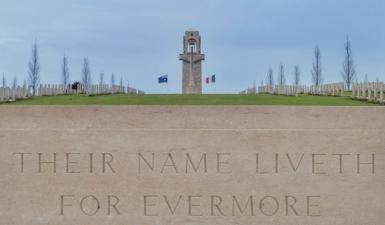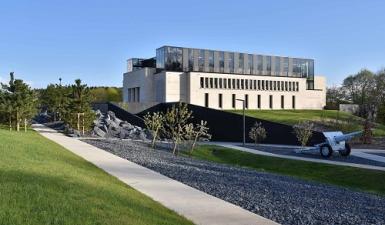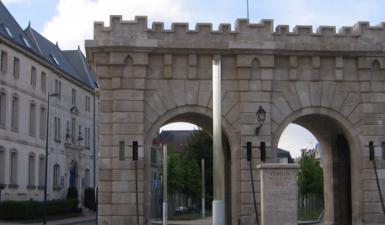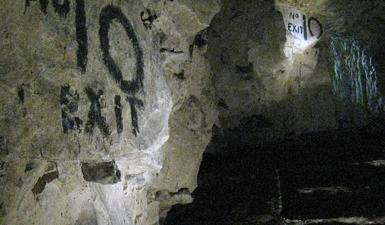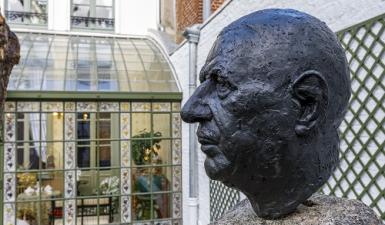Remembrance tourism in Hauts-de-France
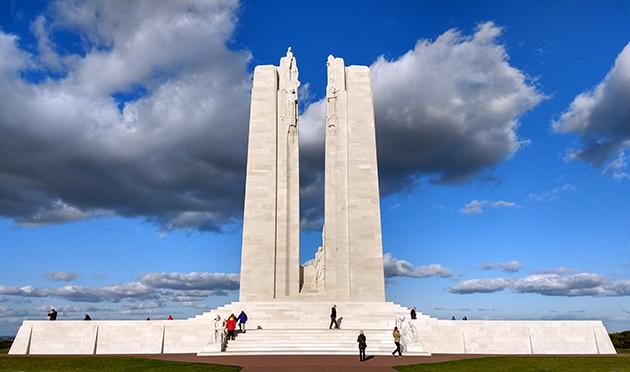
Contents
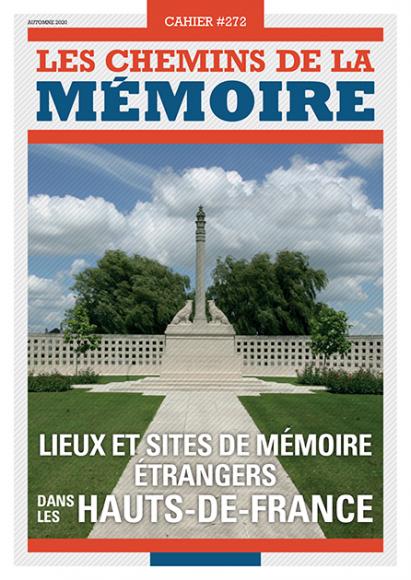
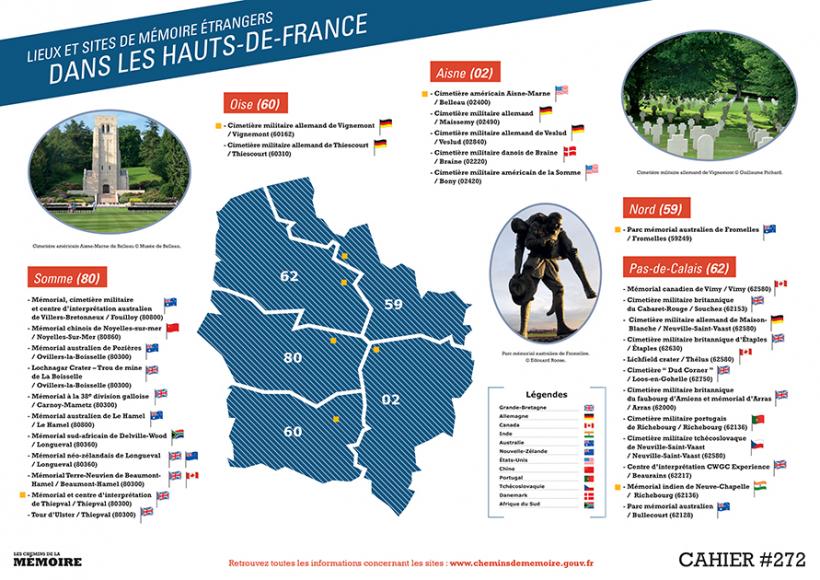
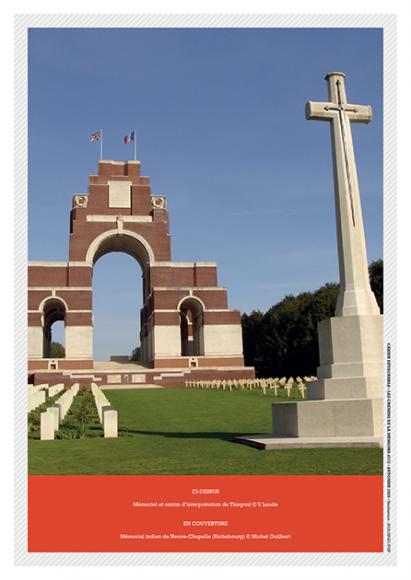
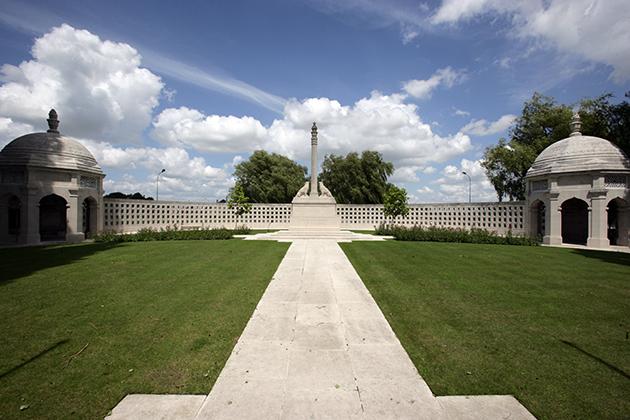
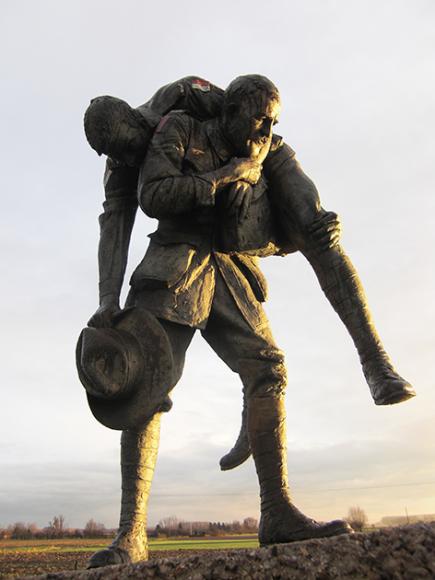
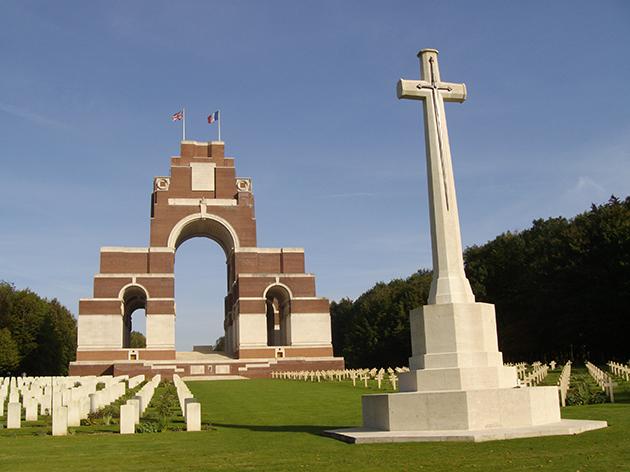
Summary
DATE : 2020
LIEU : France
ISSUE : 130e anniversaire de la naissance du général de Gaulle, 80e anniversaire de son célèbre appel du 18 juin 1940 et 50e anniversaire de sa disparition
A land steeped in history, Hauts-de-France received crowds of French and foreign visitors for the First World War centenary. Building on that success and the involvement of local actors, the region has encouraged cooperation across the territory around remembrance tourism, which brings economic, cultural and civic benefits.
For the First World War centenary, Hauts-de-France hosted some major commemorative events, at which France and many other European and Commonwealth countries paid a vibrant tribute to the soldiers killed in the Great War.
In the five departments that make up the region, the centenary was a superb opportunity to put the spotlight on the initiatives undertaken alongside the ceremonies. Because while remembrance heritage reveals the ravages caused by the two world wars in the region, the local authorities of Hauts-de-France, together with a number of foreign governments, have shown considerable conviction and proactive involvement towards making that history a vehicle for cultural and tourism development.
The outcome has gained in momentum since the 1990s, evidence both of the incredible vitality of this world war remembrance shared with many countries and Hauts-de-France’s permanent capacity to bounce back from the many trials it underwent during the 20th century.
A crossroads for international remembrance
After the First World War, from Ypres in Belgium as far as the Somme, the nations of the British Empire entrusted the Commonwealth War Graves Commission with the task of maintaining the military cemeteries which dot the former battlefields and to erect memorials to all soldiers with no known grave.
As the Crown gave them increasing autonomy, the dominions of the British Empire forged their own national narrative around the 1914-18 sites, emblematic testaments to their great feats of arms: Canada at Vimy Ridge, Pas-de-Calais; New Zealand at Quesnoy, Nord; South Africa at Longueval and Australia at Villers-Bretonneux, near Amiens, in the Somme. Also in the Somme, the Thiepval Memorial became the central site of British remembrance, in honour of all the soldiers who died in the Battle of the Somme in 1916.
Canada and Australia thus have a long history of involvement in Hauts-de-France. At the two major sites of Vimy (Pas-de-Calais) and Beaumont-Hamel (Somme), the Canadian government maintains a high-quality remembrance programme that combines preserving sectors of the battlefield, receiving visitors on site and outreach work by young Canadian volunteer student guides. Australia, meanwhile, has developed the Australian Remembrance Trail along the Western Front, starting from the Sir John Monash Centre and the Australian National Memorial in Villers-Bretonneux (Somme), where at dawn on 25 April every year a moving ceremony is held to mark Anzac Day.
For its part, France chose to build vast national military cemeteries, grouping together the bodies of French soldiers killed in each sector of the front. Owned by the State, these sites come under the responsibility of the Ministry of the Armed Forces, which preserves and promotes them through one of its operators, the National Office for Veterans and Victims of War (ONAC-VG). With Verdun in the Meuse, France assigns a special place to the Chemin des Dames sector in the Aisne, where such fierce fighting went on in 1917 that some soldiers refused to go to the front.
Hauts-de-France has also seen actions by the Volksbund Deutsche Kriegsgräberfürsorge to maintain the German military cemeteries on the former battlefields and in the areas that came under German occupation, and the American Battle Monuments Commission for the American cemeteries in the Aisne, where a number of “Sammies” who fought alongside the French army in 1917 and 1918 are buried.
The remembrance connections between Hauts-de-France and these different nations contribute to the region’s global importance and tourist appeal. Receiving visitors who come to pay their respects at the grave of a relative or to discover an important page of their national history has thus long been a focus of the local authorities.
An innovative tourism strategy led by local actors
In the late 1980s, the Somme and the Aisne adopted an innovative strategy to encourage tourists to visit their sites coming from an overall place of understanding.
In the Somme, the Historial-Musée de la Grande Guerre in Péronne, founded in 1992, was made the starting point for a waymarked remembrance trail revealing the remembrance sites of the 1916 Battle of the Somme, a key event for the Commonwealth nations because it was the biggest offensive carried out by the British army in the First World War.
In the Aisne, the departmental authority oversaw the development of the Dragon’s Cave to make it the place of understanding for the historical area of the Chemin des Dames, the theatre of an offensive launched on 16 April 1917 by French forces. The outcome was defeat for the French, who were so aggrieved that they refused to go on fighting, as related in the famous Chanson de Craonne.
Following the 90th anniversary of the 1918 Armistice, the Nord-Pas-de-Calais region in turn developed four “First World War Remembrance Trails in Nord-Pas-de-Calais”. Alongside an itinerary which follows the front where numerous battles took place (the Battles of Artois in 1914 and 1915, the Battle of Fromelles in 1916, the Battle of Arras and the Battle of Cambrai in 1917, and the Battle of the Lys in 1918), three additional trails shed light on little-known aspects of the conflict: the mobile war and the first German occupation, the organisation of the Allied armies on the English Channel and North Sea coasts, and examples of post-war reconstruction.
As the last surviving French First World War veterans died in a peaceful and united Western Europe, the centenary commemorations found a powerful resonance among citizens, who were invited to take a closer look at this important page of European and world history. Gathering to gauge the impact of the conflict and pay tribute to its victims: that is the meaning behind the Ring of Remembrance, erected by the Nord-Pas-de-Calais regional authority opposite the National Cemetery of Notre Dame de Lorette, in Pas-de-Calais. Officially opened in 2014, the work honours the 580 000 soldiers killed in Nord and Pas-de-Calais in the First World War, listing them in alphabetical order, without distinction as to nationality, rank or religion.
The prospect of the First World War centenary also prompted the department of Oise to promote its remembrance heritage, through the Musée de Territoire 14-18 and the “Red Line” trail. Oise is home to the Armistice Clearing at Compiègne, the epicentre of French contemporary history, where two armistices were signed: that of 11 November 1918 establishing the French victory, and that of 21 June 1940, which marked France’s defeat by the Nazis following the Battle of France.
In addition, tourism professionals (accommodation providers, restaurateurs, guides, visitor sites and tourist offices) have formed networks committed to furthering their knowledge of customers’ remembrance values and expectations in order to give them a better welcome. This process, launched by Somme Tourisme with Somme Battlefields Partners, inspired the creation of other visitor networks in Nord-Pas-de-Calais, with Northern France Battlefields Partners and Les Passeurs de Mémoire in the Aisne.
Yet while the focus for the First World War centenary may have been on WWI remembrance sites, the remembrance heritage of Hauts-de-France also comprises a number of sites emblematic of the history of the Second World War, which have become key destinations for visitors to the region.
La Coupole d’Helfaut, history centre and 3D planetarium. © La Coupole
Remembering the Second World War
For Hauts-de-France, 2020 is an opportunity to put various remembrance sites and interpretation centres back on the map as part of the 80th anniversary of the Battle of France and the 75th anniversary of the liberation of the Nazi concentration and extermination camps.
Three remembrance sites of national and international importance shed their own unique light on the history of the Second World War:
- In Nord, the Musée Dunkerque 1940 and the Fort des Dunes in Leffrinckoucke evoke the history of the Battle of Dunkirk, which sealed the fate of French and British forces in the Battle of France, in May-June 1940, and Operation Dynamo, which saw the evacuation of 340 000 soldiers to Britain.
- Due to its proximity to Britain, Pas-de-Calais became a key strategic sector for Nazi Germany: a former launching site for V2 rockets, the impressive Coupole d’Helfaut near Saint-Omer tells the story of the occupation of Nord and Pas-de-Calais and the scientific advances made by the Nazis that would pave the way for the post-war space programmes.
- At Compiègne, Oise, not far from the Armistice Clearing, the German occupiers transformed the military camp of Royallieu into a detention and transit camp for Resistance fighters, political prisoners, civilians and Jews on their way to the death camps. The camp is now the Memorial to Internment and Deportation.
A series of other museums and remembrance sites shed further light on the harsh conditions of occupation in Nord-Pas-de-Calais (under German administration) and Picardy (which remained under French administration) and the rise of the resistance movements, together with deportation and the acts of violence and repression committed by the occupier. These include the Musée de la Résistance et de la Déportation de Picardie in Vassogne, Aisne, the Fort de Bondues, the Mémorial du Massacre d’Ascq and Mémorial du Train de Loos in Lille, and the Mur des Fusillés in the citadel of Arras.
2020 also marks the 130th anniversary of the birth of Charles de Gaulle, the 80th anniversary of his famous call to arms of 18 June 1940 and the 50th anniversary of his death. For the occasion, the department of Nord will complete the renovation of the General’s birthplace in Lille, while the Hauts-de-France region will coordinate a rich cultural events programme entitled “De Gaulle Year Hauts-de-France 2020”.
When it was created, in 2015, by the merging of Nord-Pas-de-Calais and Picardy, Hauts-de-France brought together areas that had already revealed the emblematic remembrance sites for understanding the two world wars in the region.
As the close of the First World War centenary celebrations brought a shift from the discovery of the WWI sites to permanent history tourism, the Hauts-de-France region made a commitment to develop this new area. In partnership with tourism and remembrance organisations, the emergence of a coherent tourism offering across Hauts-de-France, backed up by innovative visit ideas and outreach initiatives to cater for visitors’ expectations, would be the key to preserving the reputation and appeal of remembrance sites for the future.
Restoring the mosaics of the basilica of Notre Dame de Lorette
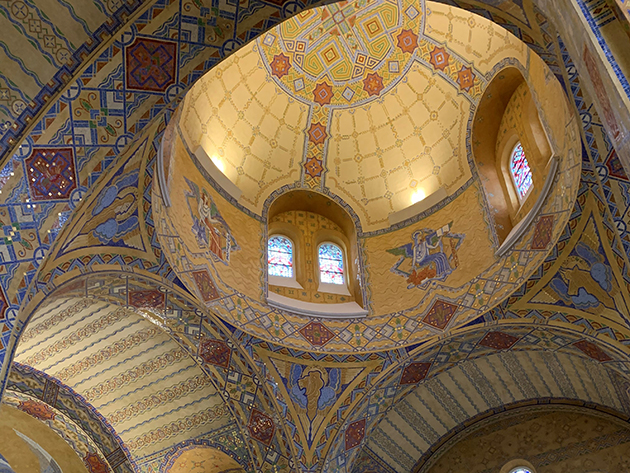
Interior of the basilica of Notre Dame de Lorette. © Guillaume Pichard
At the heart of France’s largest military cemetery – a Major National Remembrance Site since 2014, where 42 000 French soldiers killed on the Artois and Flanders front are buried – there stands a Romano-Byzantine-style basilica, inaugurated on 2 August 1925. Designed by architect Louis-Marie Cordonnier, its stained-glass windows and mosaics are remarkable.
As part of its remembrance heritage preservation policy, in 2019 the Ministry of the Armed Forces completed the restoration of the mosaics, which had deteriorated over time, to reveal a unique site of outstanding value.
The Mem’Histo network
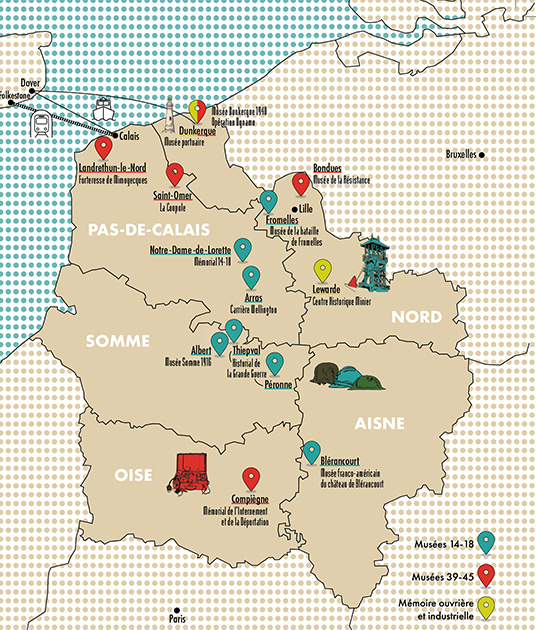
Presentation booklet. © Réseau Mem’Histo
To promote the richness and diversity of Hauts-de-France’s contemporary history museums, 14 sites teamed up under the banner of the Mem’Histo network.
These museums, concerned with industrial and labour history as well as the First and Second World Wars, offer virtual tours via an interactive digital platform. To access the platform, available in four languages, visit: www.memhisto.com.
Digital innovation
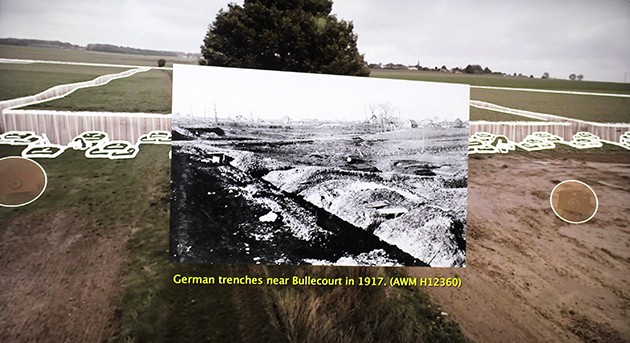
The “1917 Bullecourt 360°” system. © David Quérin
Digital technology is one of the key levers used to facilitate comprehension of the region’s sites and history. In the context of two nationwide calls for projects on the theme of “Innovative digital services and remembrance tourism in France”, the Ministry of the Armed Forces has supported three projects from Hauts-de-France, one of which is the immersive technology “1917 Bullecourt 360°”, developed at Musée Jean et Denise Letaille-Bullecourt 1917. Meanwhile, in 2021 the Memorial of Notre Dame de Lorette and Louvre Lens Vallée will host a professional seminar of the network of museums and memorials of contemporary conflicts on the theme of digital innovation.
Author
Édouard Roose - Assistant to the Hauts-de-France regional councillor for remembrance
Read more
Articles of the review
-
The event
The 80th anniversary of Operation Dynamo
To mark the 80th anniversary of Operation Dynamo, the Fort des Dunes and the national military cemetery of Leffrinckoucke reveal an exceptional site, completely restored; a unique witness of the Battle of Dunkirk, whose memory occupies a central place in British and French collective memory. ...Read more -
The figure
Art and gardens
Hauts-de-France was left deeply scarred by the Great War. For the centenary of the conflict, a landscaping project was born to reaffirm the message of peace which today emanates from the region’s remembrance sites and cemeteries.
Read more -
The interview

Martine Aubry
Martine Aubry is a research engineer at Lille 3 university. With a group of lecturer-researchers, she designed a database to catalogue the war memorials of Nord and Pas-de-Calais, which became collaborative and has since been expanded to include the rest of France and some foreign countries. ...Read more



